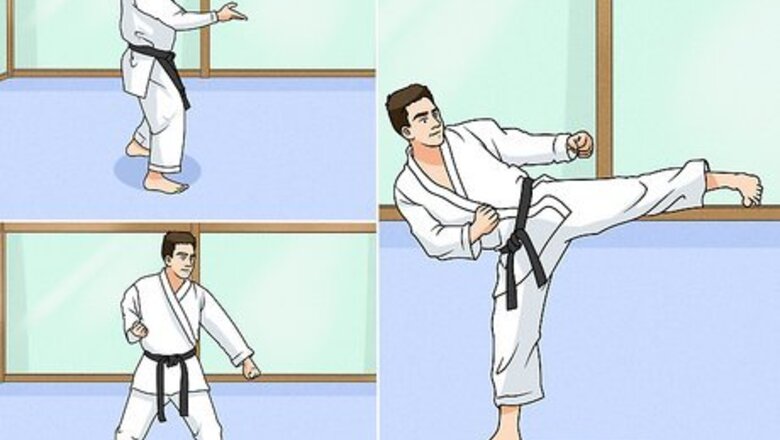
views
What are the best fighting styles to learn?
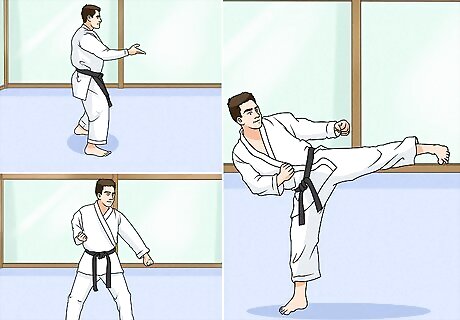
Understand the fundamentals of Karate if you're a younger or beginning fighter. There are many forms of karate, but they all focus on the basics of blocks, punches, and kicks, combining them into fluid form and application. Karate is a solid introduction to martial arts for inexperienced adults and young children, as well as experienced self-defense practitioners.
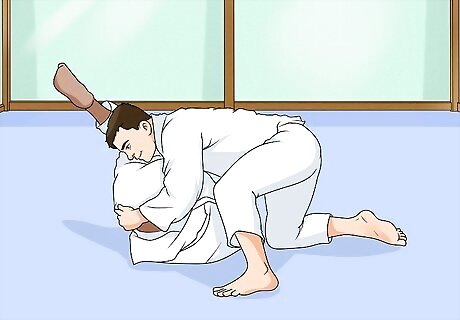
Use mixed martial arts to learn multiple fighting styles at once. Many fighters consider mixed martial arts a fluid, ideal discipline to start with. As its name suggests, MMA is a combination of different styles and disciplines. Variations of judo, jiu-jitsu, and Muay Thai are fighting styles often employed in MMA, but you don’t have to stick to just one of these styles. A combination can be effective, and your opponent’s mode of attack might dictate your own method of defense. MMA is one of America's fastest-growing sports, and can be found at local gyms and clubs in most cities and towns.
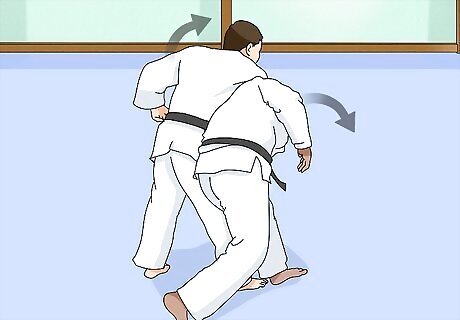
Use Judo to learn takedowns, grabs, and holds. If you're heavy and stocky, study judo, a widespread style, and Olympic sport. Judo is known for its throws and takedowns of opponents. Learning Judo can be a very effective way at neutralizing an opponent and gaining the upper hand. Throws and other forms of close-quarters combat are crucial in many fighting situations, especially self-defense.
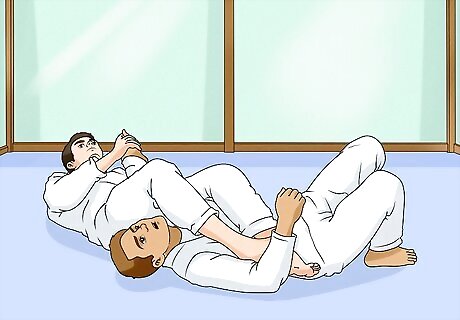
Learn jiu-jitsu to practice effective grappling techniques. This is a great option for stockier or smaller fighters, but all can benefit. Jiu-jitsu is very popular in MMA today and is often employed in a ground or defensive fighting. Some form of grappling or wrestling should be incorporated into any self-defense regimen, and jiu-jitsu can provide the fundamental framework.
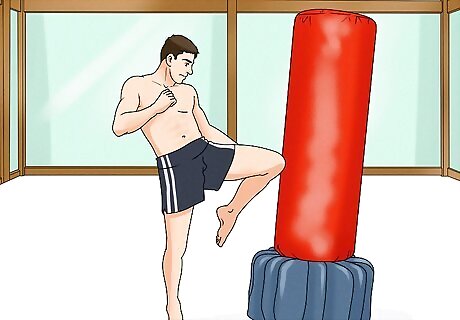
Train in Muay Thai to learn effective striking and conditioning. Muay Thai looks similar to kickboxing and, at times, jiu-jitsu, but it is different from both. Muay Thai primarily focuses on strikes from fists, elbows, knees, and feet, and it involves a type of grappling known as the clinch that is meant to set up these strikes.
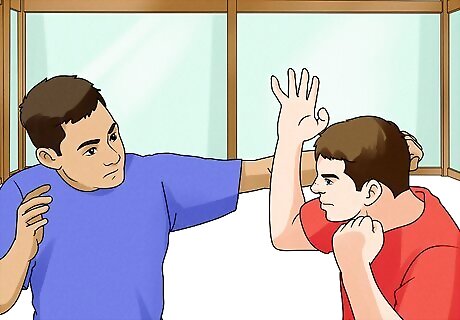
Employ Krav Maga for self-defense and street fighting. Krav Maga, Hebrew for “contact combat,” is currently very popular, particularly in military and self-defense training. The primary purpose of Krav Maga is to defend oneself and end a confrontation quickly and definitively. Its focus is on swift counterattacks, and it accounts heavily for defense against weapons.
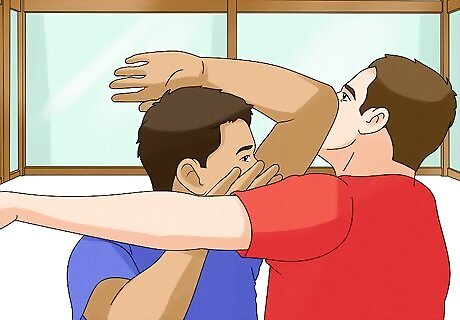
Use Ninjutsu for self-defense and training. Ninjutsu is the feudal Japanese guerrilla fighting style of the ninja or shinobi. In Ninjutsu, you’ll study pressure points and surprising moves, while training for fitness and agility. Historically, Ninjutsu training is secretive, and teachings vary by instructor. Ninjutsu is a very complex, nuanced fighting form that takes decades to learn. That said, the basics of it will benefit any fighter.
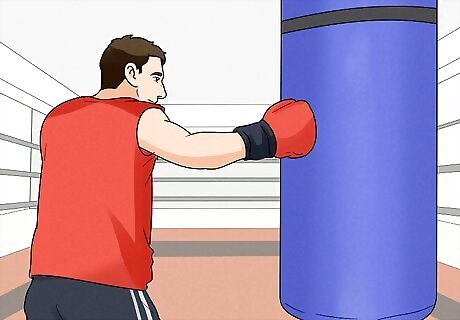
Train for boxing to build up footwork and solid punching and blocking. Boxing training can come in handy in almost any fighting situation. Boxing teaches speed, striking with accuracy, dodging punches, footwork, and how to read your opponent’s punches. These are all valuable skills. Plus, boxing is good for a cardiovascular workout and to build core strength, upper body strength, and stamina.
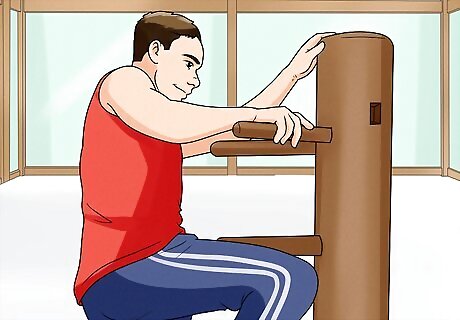
Learn Kung Fu for speed, agility, and power. If you’re quick and fast, consider Kung Fu. Kung Fu is also a good way to stay fit in general or for training in any other type of fighting style. Kung Fu training involves both “Iron Body” and “Light Body” conditioning. The former is meant to strengthen the body into a weapon. The latter, much like Parkour, teaches speed and agility through exercises like running up walls.
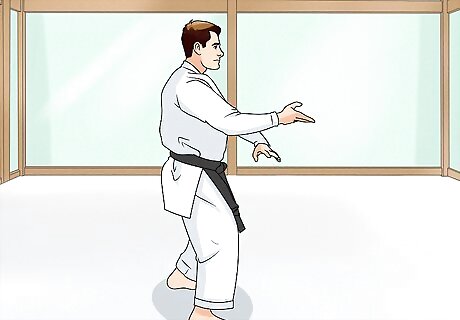
Train in Taekwondo for overall mind/body conditioning. Taekwondo is known for its discipline, self-control, and conditioning. It uses isometric and dynamic tension exercises to tone and to put strength in muscles. Training in taekwondo helps hone reflexes and coordination as well as self-esteem.
Ways to Find Yourself as a Fighter
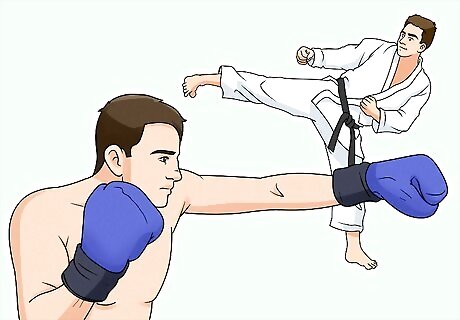
Take honest stock of your strengths. Whether you're a boxer or a mixed martial artist (MMA), the first step to developing a style is figuring out what you're working with. Your physical traits might help you naturally fall into a fighting style, or make training for a certain discipline more natural. The best fighters develop their own style, one that accounts for their own bodies instead of copying someone else. Long, wiry bodies have great reach, allowing them to pepper opponents from a distance. Short, muscular bodies have to get in close, and focus on landing hard, powerful hits. Is your natural inclination to use your feet and knees? Keep your blocks high and practice getting as much range out of kicks as possible. Can you run for days without getting tired? Then keep your feet moving and tire your opponent out, moving in for the KO when she/he starts to become tired.
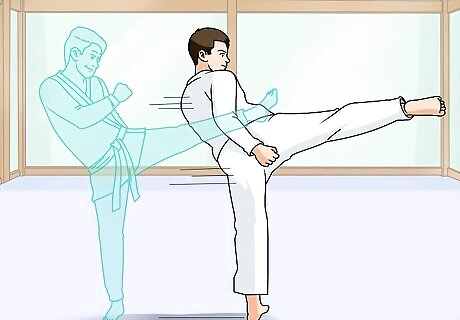
Note your weaknesses and find ways to cover them. No fighter is perfect. But the best fighters take the time to find their weaknesses and prevent their opponent from using them against them. Bruce Lee, for example, is quick, powerful, and intelligent. But he was never tall. He knew fully well that a long-limbed opponent would try and keep him at a distance so that Bruce could never land a hit. His answer -- develop the sort of blazing speed and counter-attacks that let him close in on his opponents quickly. Do you struggle to dictate a fight and be aggressive? Then work on your counterattacks and blocks, forcing aggressive fighters to over-extend and make a mistake. Are you big and bulky, but slow? Get in close with grapples and grabs, negating your opponent's speed, or sit back and block small jabs while you aim for 1-2 big hits.
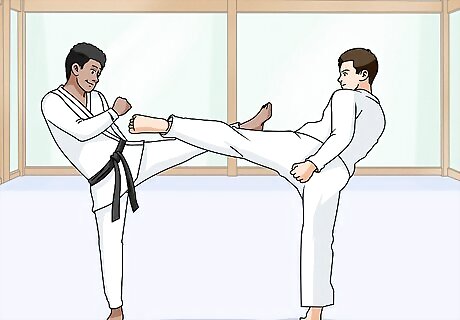
Spar regularly. The best way to determine your fighting style is to fight. There is really no other way to determine what will work for you and what strategies fall flat. That said, there are a right and a wrong way to spar if you want to get better: Warm up at half-speed. No one will get hurt, and you can start to feel what moves are fluid and easy to pull off. Fight a variety of people. Note how you need to change up your style or strategy slightly against other people's styles. What can you learn from them? Have a trainer or third person watching to give advice and feedback -- you can't see everything.

Watch other fighters for inspiration, but not to copycat. Remember -- the best fighting style is completely unique to you, and trying to copy another's style will just lead to defeat. That said you can, and should, borrow techniques you like from other fighters, incorporating the work of the masters into your own personal style. When possible, watch fighters in other disciplines as well -- what can you learn about boxing footwork, for example, by watching talented MMA fighters? Watch fighters with similar builds and body types as you -- you'll be more likely to replicate their moves and strategy.
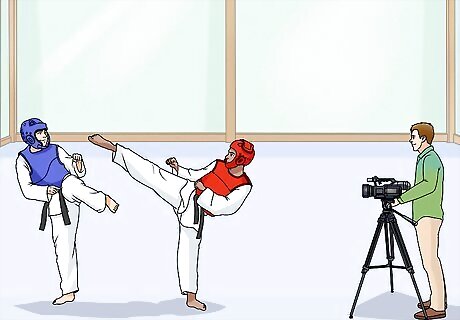
Tape yourself fighting. Watching yourself fight is the best way to note your own mistakes and pick up new techniques. When you rewatch the fight, break down the footage into smaller parts. Watch once to pay attention to footwork, once to punches and offense, and once to watch your opponent's strategy. When you see a mistake or a missed opportunity, hit pause and think about what you can do better next time.
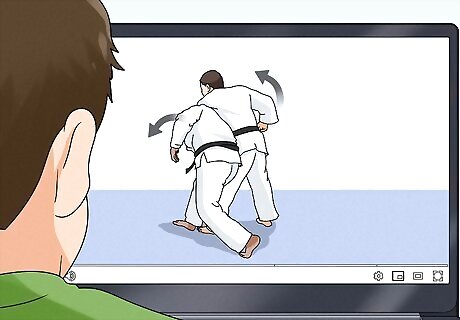
Study other disciplines to become a well-rounded fighter. Style, in many ways, is about adapting. How do you counter or react to a situation in a fight? What is your natural inclination when attacked? What are your opponents? The more you know the more you'll discover about your style. Thought of another way -- if you are a natural bruiser (lots of big, hard hits), but always train to be a counter-attacker, you'll never be able to unlock your natural fighting style. Expose yourself to a wide range of fights, fighters, and styles and pick what works for you. A boxer can learn a lot from Muay Tai, and an MMA fighter can learn a lot from Judo. All of these disciplines are related and give you the competitive edge over your opponents. If you're lost, peruse the list of popular fighting disciplines below to find potential new styles.
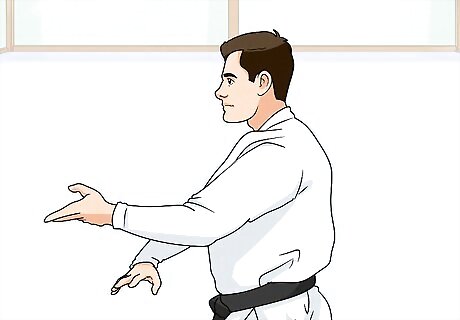
Let your style evolve organically instead of forcing yourself to fight a certain way. A fighter's style is actually pretty easy to define. It is simply how a fighter maximizes their own strengths and weaknesses. There is no one style that is better than another, just like no one fighter is like any other fighter. As such, the best way to get better is to keep studying, keep practicing, and keep fighting. You'll quickly learn what works for you when you win. And you'll definitely learn what doesn't work when you lose. There is no right style, there is only your style. Don't worry about "one style." You'll be easy to predict and beat. But if you can switch it up on your opponent with something unique you'll be much more powerful. “Have no way as Way; have no limitation as limitation.” – Bruce Lee
Effective Training Tips
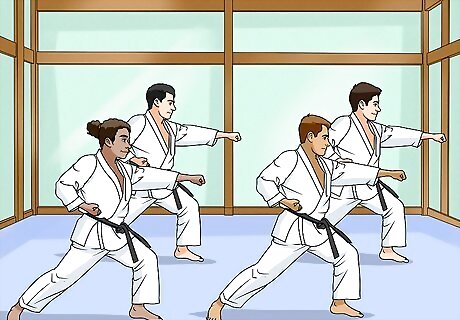
Take a free class to see what you enjoy. Many martial arts studios and other athletic facilities will offer one free class, which is an excellent way to determine if a style feels right to you. The best styles, especially for beginners, are simply those that feel the most natural to perform.
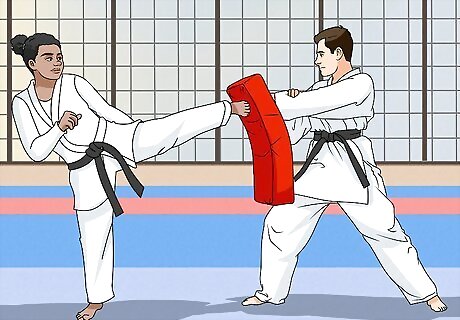
Hire a trainer to point out weaknesses and improve strengths. Sometimes all you need to discover your style is another set of eyes. A trainer, who has seen and worked with many styles, is invaluable if you plan on pushing your fighting further than a casual hobby. A good trainer is one you feel comfortable with, but who still pushes you to improve and work harder. If you're intimidated about working one-on-one, join a gym in your chosen discipline (boxing, MMA, karate, etc.). The group setting is a great place to start working with less pressure.

Focus on technique above all else, no matter what your style. The technique is the art of getting the most speed and power out of your body with the least effort. It requires hours of slower, concentrated practice punching, kicking, and dodging so that the motion is completely natural when you need it in a fight. Though sparring is crucial to develop a style, technical exercises are needed to make your style sing. Try out: Speed-bag drills Punching bag workouts Shadow-boxing (acting out a fight, in full speed, by yourself). Target practice (when a coach or friend holds up pads to hit).
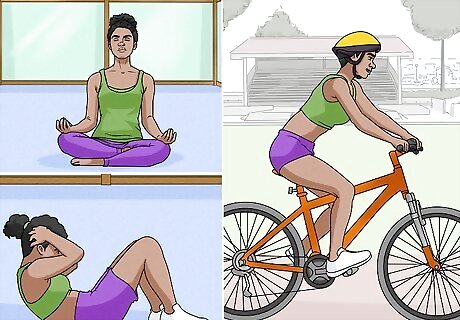
Focus on full-body workouts to be a better all-around fighter. The type of workout will obviously change depending on the fighting discipline. However, fighting is always a full body sport. A strong physical base is needed to build your style upon; you'll never discover your style if you're too tired or weak to fight effectively. No matter how you're fighting, the following exercises are a great place to start: 3-4 days a week of cardio (running, biking, swimming, etc.) Daily push-ups, pull-ups, and crunches. Daily stretching for flexibility (Yoga and aerobics are good options) Plyometrics and jump rope for agility Interval training for strength and explosiveness.
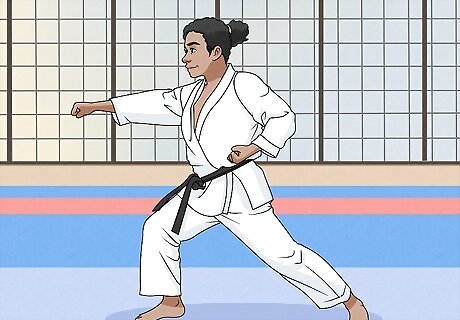
Work on what feels natural, not what looks cool, to discover style. Your style should feel fluid and easy. This isn't to say that you shouldn't practice difficult moves. It means that your body knows itself best. If you struggle every day to get a long, high kick to land, then you're not necessarily a long-range kicker. But if you can hit a speed bag all day and dance in the ring for hours, then you've found a road worth traveling down. If you keep practicing, you'll find ways to make things natural. Remember that, in a fight, you only have a split-second to react. You will, of course, react with what your body finds easiest. Train that instinct to be the best it can be.

















Comments
0 comment